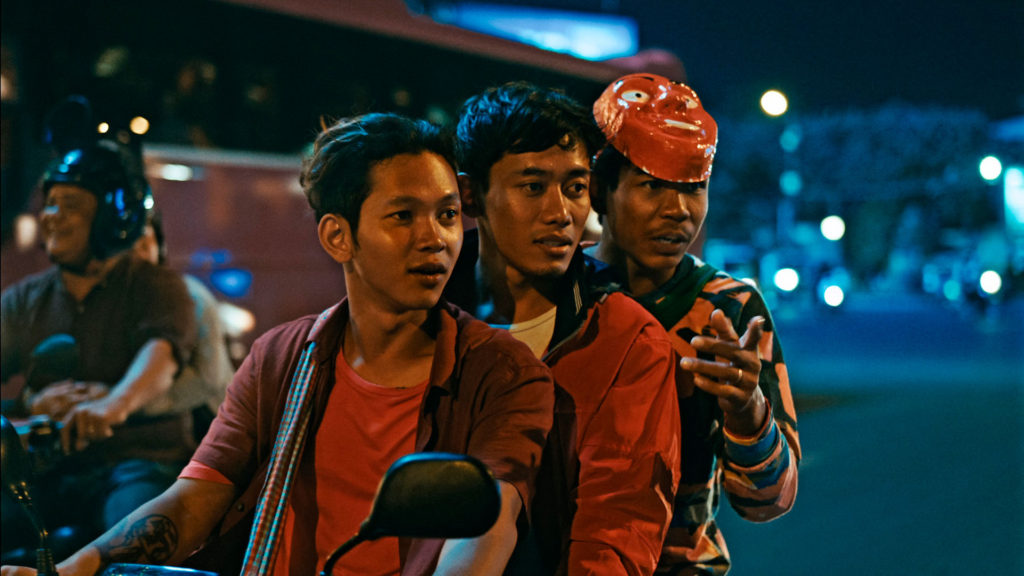It’s clear from the opening moments why the narrative feature debut of Kavich Neang, finally arriving in the US nearly two years after its 2021 Venice premiere, caught the attention of its co-producer Jia Zhangke. Like much of the Chinese filmmaker’s internationally-lauded work, Neang’s debut dives into the effects of gentrification on a younger population struggling to get by as their country cautiously opens its arms to international developers. But the similarities end there: where Jia’s films can double up as grander state-of-the-nation addresses, Neang doesn’t widen his focus beyond the characters; they’re at risk of displacement from the city they’ve always known, but this critique of gentrification largely remains implicit, visible only allegorically through their daily struggles.
This semi-autobiographical film is set against the backdrop of the titular White Building, an apartment block in the Cambodian capital of Phnom Penh that was eventually demolished to make way for a casino in 2018. The opening sequence, a bird’s-eye tracking shot revealing the sheer scale of the block, is most effective in conveying the sense of loss felt by those who lived there––this wasn’t just a crumbling building, but a sprawling urban complex home to roughly 493 families in its final weeks standing, even if it does initially look abandoned to the outside observer. Those who lived there (who were previously chronicled in the director’s 2019 documentary Last Night I Saw You Smiling) may have still been struggling to get by in an increasingly globalized city, but the sense of security it provided before being taken away is keenly felt as we meet the community still living there.
The story is centered on Nang (Piseth Chhun), who has spent his life in the building with his mother and diabetic father but has bigger aspirations. Alongside his two friends, he hopes to make it as a successful dancer, with the three spending their evenings atop a motorbike, riding around the city to find any bars or restaurants that will allow them to perform for customers. It’s a nice touch that none of the three are particularly polished in their choreography; they’re just good enough to grab your attention without being laughable, each individually accomplished while never being able to sync up their moves as a collective. The opening third is spent largely with this group, offering a lived-in portrayal of working-class Gen Z life in a bustling capital they’re on the verge of being priced out of. But focus soon shifts inward as the imminent demolition (referenced only in background flyers around the building) becomes the driving factor.
This isn’t quite as dramatically involving as the opening act; Neang’s style has been defined as slow cinema by some critics, an ill-fitting sub-genre likely prescribed to his film because it refuses to explore the tensions within this divided community in a pronounced way. White Building residents are offered a laughable sum in exchange for leaving their homes, a pittance that won’t help them secure a home in rural areas––let alone their home city––with passionate debates as to whether they should accept this proposal. Well, “debate” is maybe too charged a term to describe what comes to fruition, which is never as dramatically invigorating as it should be; perhaps what I was looking for was something akin to the passionate arguments about working-class rights aired in Mike Leigh’s period piece Peterloo, rather than a deliberately-muted drama.
The third act sees White Buildings regain some steam, albeit via some distractingly overbearing allegory where the deteriorating health of Nang’s father overlaps with the family’s financial strife and impending displacement. These sequences, it should also be noted, are not for the squeamish; the physical ailment, which means he needs his toe amputated immediately, is shown in close-up, the difficulty in getting the work completed to heal it becoming a more visceral metaphor purely by association. It’s a galvanizing moment in this otherwise muted, promising debut.
White Building opens on Friday, May 19.

